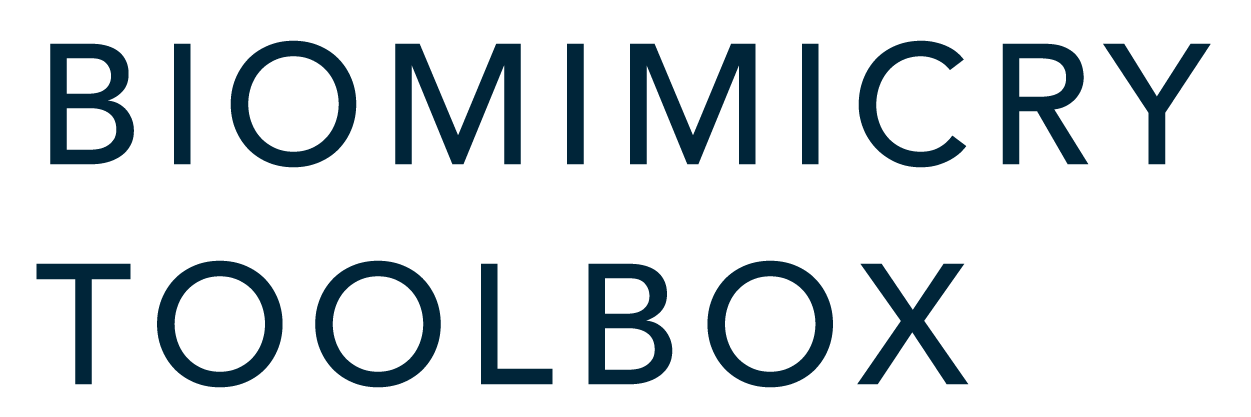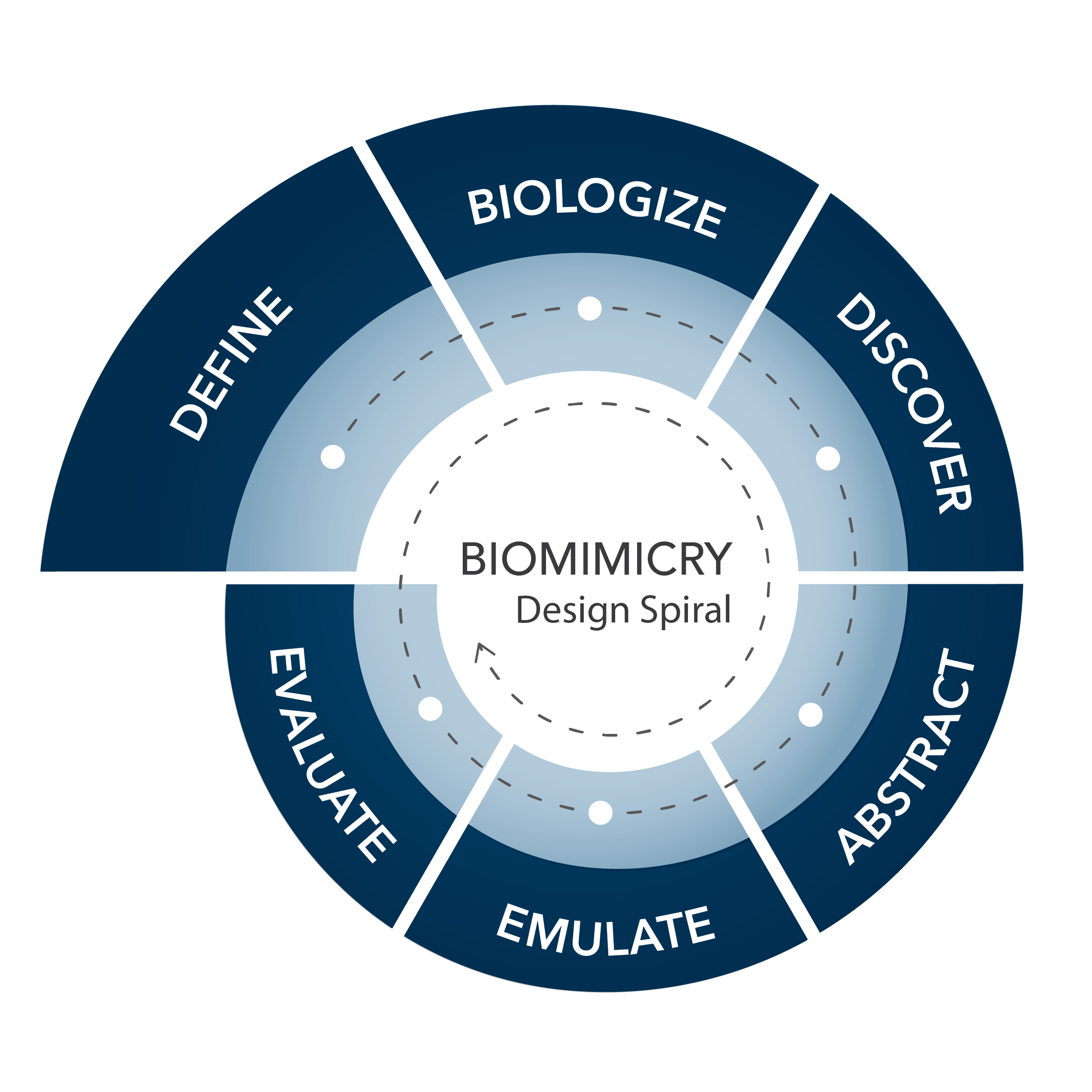The Biomimicry Design Process
Following a design process can be extremely helpful when setting out to solve a design challenge. The Biomimicry Design Spiral provides a succinct description of the essential elements of a design process that uses nature a guide for creating solutions. It describes the six most important steps a design team should take when seeking biomimetic solutions to a design challenge. The steps are described sequentially as a starting point. However, design teams often find themselves moving back and forth between steps or repeating them. This is good practice as each step tends to reveal new information that may inform or challenge assumptions made in previous steps.
The Biomimicry Design Spiral is especially useful for those new to biomimicry or design in general. We recommend using it to anchor your design process as a whole or as a general guide for how you can integrate insights from biomimicry into another design methodology you work with.
Process Overview
Below is a summary of the biomimicry design process described by the Design Spiral. For more information about each of these steps, refer to the relevant linked pages of the Toolbox.
DEFINE
Clearly articulate the impact you want your design to have in the world (i.e. the challenge you want to solve) and the criteria and constraints that will determine success.
BIOLOGIZE
Analyze the essential functions and context your design solution must address. Reframe them in biological terms, so that you can “ask nature” for advice.
DISCOVER
Look for natural models (organisms and ecosystems) that need to address the same functions and context as your design solution. Identify the strategies used that support their survival and success.
ABSTRACT
Carefully study the essential features or mechanisms that make the biological strategies successful. Restate them in non-biological terms, as “design strategies.”
EMULATE
Look for patterns and relationships among the strategies you found and hone in on the the key lessons that should inform your solution. Develop design concepts based on these elements.
EVALUATE
Assess the design concept(s) for how well they meet the criteria and constraints of the design challenge and fit into Earth’s systems. Consider technical and business model feasibility. Refine and revisit previous steps as needed to produce a viable solution.
Ready to get started? Let’s go!
Learn about the first step of the Biomimicry Design Spiral: Define.



